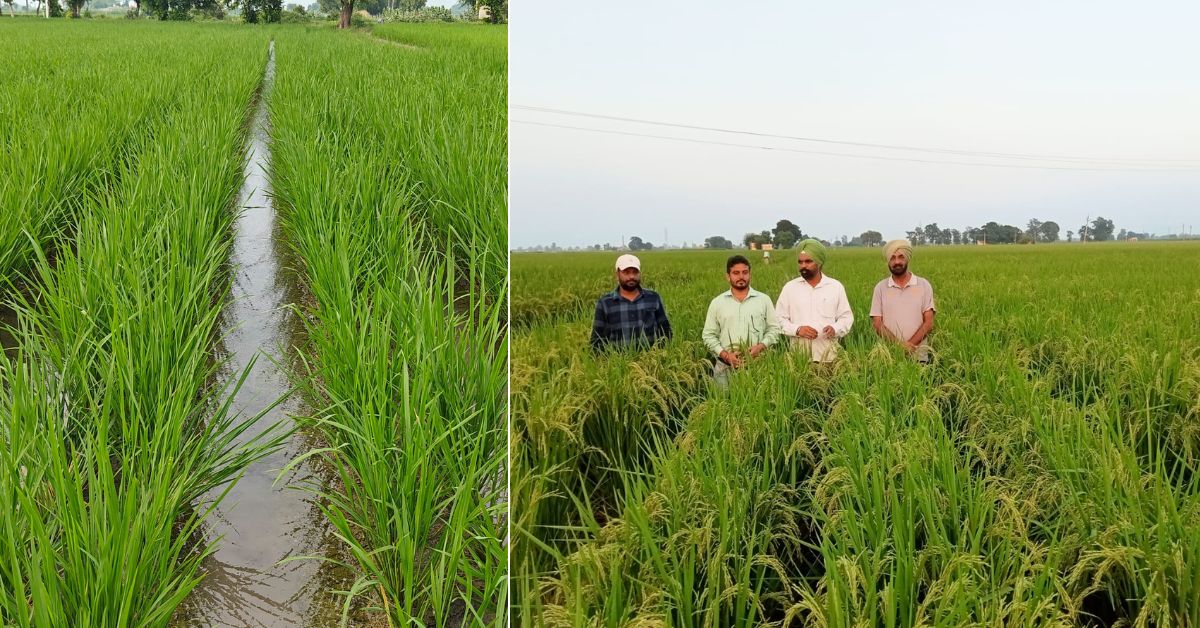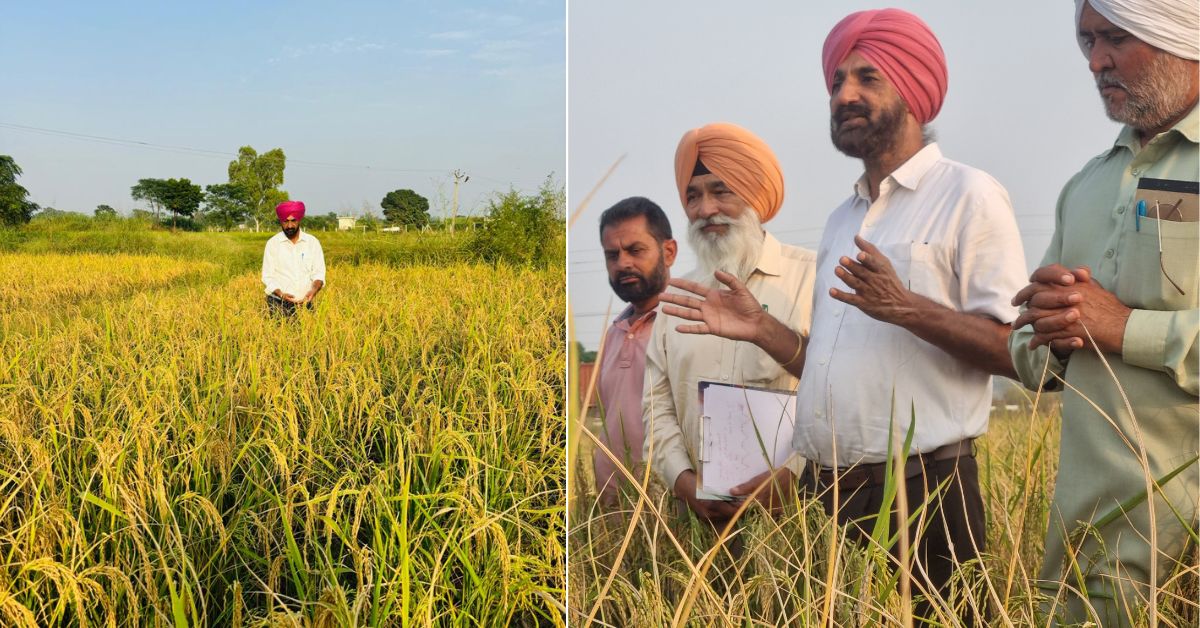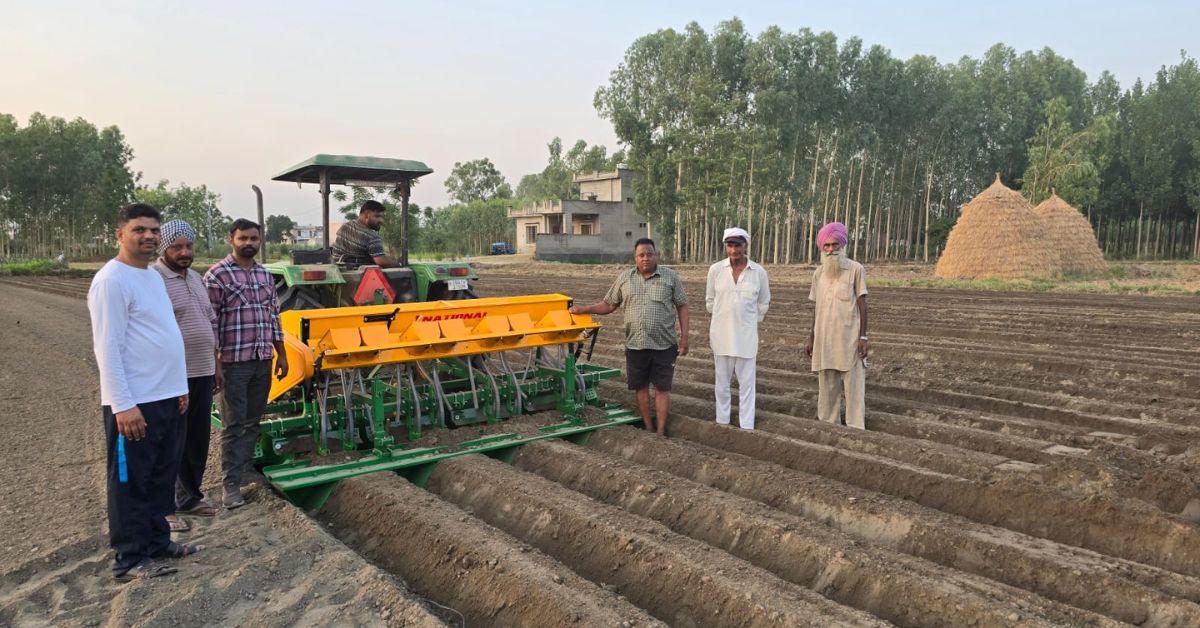Born and raised in the fertile fields of Punjab, agriculture was an intrinsic part of Kahan Singh Pannu’s life from childhood.
Where fields once traditionally overflowed with lush green paddy during the monsoon season, a silent crisis is now unfolding beneath the soil. Often called the breadbasket of India, Punjab is facing a serious threat from rapidly depleting groundwater levels. Recent data from the Central Groundwater Board predicts that the state’s groundwater could drop below 1,000 feet by 2039.
“This is due to the state’s over-exploitation of groundwater, which has been happening for decades,” Kahan Singh points out.
Currently, rice is grown in 87 percent of Punjab’s total area during the Kharif season. The state is the highest extractor of groundwater in India, with 97 percent of it used for irrigation, mainly for paddy.
Kahan Singh was acutely aware of the water crisis plaguing the region, having witnessed firsthand the drastic decline in groundwater levels in his village, Jai Nagar.

The falling water table threatens not just crops but also entire communities whose livelihoods depend on agriculture.
Amidst this situation, Kahan Singh — a retired IAS officer with a strong background in agriculture — is bringing hope with his new method of growing paddy, one that dramatically reduces water usage to 25 percent.
Addressing the water crisis head-on
Kahan Singh, a 1996 batch IAS officer, retired in 2020 after a distinguished career, including serving as the Secretary of Agriculture for Punjab. “The water in Punjab’s aquifers is depleting at an unsustainable rate, largely due to paddy cultivation, which isn’t even native to the area. The data and observations over the past few decades were alarming,” he says.
This crisis pushed him to act. Rather than simply watch as the state’s most vital resource continued to decline, Kahan Singh focused on creating a solution to sustain agriculture while preserving the state’s groundwater.
With his strong academic background in agriculture and decades of field experience, the 64-year-old developed what he calls the SRB technique — Seeding of Rice on Beds. This method significantly reduces the water needed for paddy farming, saving up to 75 percent.
“Traditionally, paddy cultivation requires vast amounts of standing water, often using up to 4,000 litres for producing one kilogram of rice. Fields are flooded throughout the growing season to suppress weed growth, a practice that inadvertently drains the water table,” he explains.
A game-changer for water conservation
Using his networks and knowledge from decades of public service and agriculture, Kahan Singh collaborated with local agricultural equipment manufacturers. Together, they developed the SRB device — a machine designed to prepare beds and plant paddy seeds at the same time. By combining these steps, the device is helping save labour and improve accuracy in farming.

Explaining how it works, the retired officer says, “The machine prepares the beds in the field and simultaneously plants the seeds on the bed. So, after we plough the field, we let the machine do the work. When the seeds germinate, we supply water only in the furrows of the beds.”
“Since the bed width is about two feet and the furrow width is one foot, water is supplied in these furrows only when needed. This method ensures water reaches the roots without submerging the entire field,” he adds.
As a result, this technique requires only 25 percent of the water traditionally used for paddy cultivation.
Transitioning from conventional methods to SRB was not without its challenges. The technology had to address one major problem: effective weed control without a constant layer of water.
“There is a tendency for weeds to germinate along with paddy. Weeds can severely affect paddy growth by competing with it for water and nutrients. This is why farmers flood paddy fields to kill weeds. To overcome this, we use herbicide-tolerant seeds, which have been given to us by the Indian Agricultural Research Institute. Once the seeds kill the weeds, paddy thrives within about 100 days. My experience with this technique has been wonderful,” he adds.
In the recent growing season, the SRB technique was adopted at 12 trial sites across Punjab, showing great results in both water conservation and crop production. “The yield was on par with traditional methods,” says Kahan Singh, who harvested 28 quintals of paddy per acre.
Saving water, scripting success
Jaswinder Singh, a farmer and resident of Lambra village in the Hoshiarpur district, adopted the SRB technique last season to grow paddy on two acres of land. “I observed that using this technique, I was able to save Rs 8,000 per acre on irrigation and labour costs. As there was no need for standing water in this method, I only had to water my field four times. Earlier, we had to irrigate the field at least 20 times. Despite less irrigation, there was no difference in the yield,” says the farmer, who harvested 24 quintals of rice from his land.

Highlighting the increasing water shortage in his village, Jaswinder points out, “We depend on tubewells for water. Every year, we have to install more powerful motors to extract groundwater, which has now dropped to a depth of 280 feet.”
“I believe this technique will greatly help farmers get the same yield from the same land while reducing irrigation and labour costs. More importantly, we will be saving so much groundwater. Usually, farmers fear doing experiments, but I hope that seeing my success, more farmers will adopt this approach,” adds Jaswinder, who plans to expand paddy cultivation using Kahan Singh’s technique to four acres of land.
The financial benefits of SRB are clear. “Farmers save approximately Rs 8,000 per acre due to reduced labour and water requirements, slashing their cultivation costs by nearly half. These savings make the technique attractive for adoption across the economically stressed farming community,” he shares.
Seeing Kahan Singh’s success, other local farmers are eager to try the method. “Many plan to expand usage to larger areas next season,” he shares.
His work is more than a fleeting innovation — it has the potential to revolutionise farming in water-scarce areas. Reflecting on his early years, he recalls, “I have so many cherished childhood memories in my village; so many stories revolve around wells. I have seen people take their livestock to those wells, bathe, and fetch water. Today, functioning wells are nowhere in sight.”
“I want to foster a new mindset among farmers toward regenerative and conservation-oriented agriculture so that we can ensure Punjab remains robustly productive for generations to come,” Kahan Singh smiles.
As the former IAS officer continues to inspire change, his vision for a more sustainable Punjab is a strong reminder that innovative solutions to global challenges can start in a single village, with one determined person willing to make a difference.
Source:
Punjab sticks to paddy amid depleting groundwater: by Vivek Gupta for Mongabay, Published on 24 January 2023.
Edited by Pranita Bhat; All photos courtesy Kahan Singh Pannu
No comments:
Post a Comment